Yep, you read that right, some dogs have webbed feet — they’re not just for ducks!
In fact, there are a number of dog breeds that have webbed feet.
In most cases, webbed paws help dogs to swim more efficiently, but there are a few more benefits to having webbed paws, which we’ll go through in more detail below.
Read on to learn about dog breeds with webbed feet — you may be surprised by some of the breeds listed below!
Dogs with Webbed Feet: Key Takeaways
- All dogs start life with webbed feet, but most lose the majority of their webbing early in life. However, a handful of breeds retain webbed feet throughout their lives.
- Webbed paws help many dog breeds to swim more efficiently. Webbed feet are also useful for digging and walking on soft or muddy surfaces.
- Many of the breeds with webbed feet are good swimmers or diggers. This includes Labs and poodles, as well as dachshunds.
Webbed Dog Paws 101: Why Do Some Dogs Have Webbed Feet?
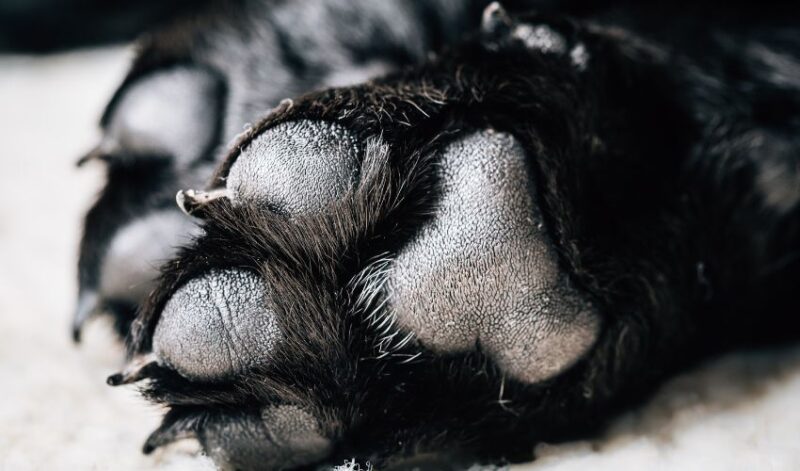
The “webbing” of a dog’s paws is a membrane of connective tissue and skin between the dog’s toes.
You may already be aware of a number of animals that have webbed feet, but did you know that most land mammals begin life with them?
While most species tend to lose the majority of the webbing before birth, every dog breed will retain some of it (although you won’t really notice it in most breeds).
On rare occasions, dogs and other animals can be born with all of the webbing intact. Dog breeders have used this “birth defect” to their advantage and bred dogs to produce puppies with webbed paws.
The Benefits of Webbed Feet in Dogs
There are several different benefits webbed feet provide dogs.
As mentioned earlier, webbed feet can help dogs swim more efficiently — the webbing allows them to paddle quicker and be more controlled in their movements in the water.
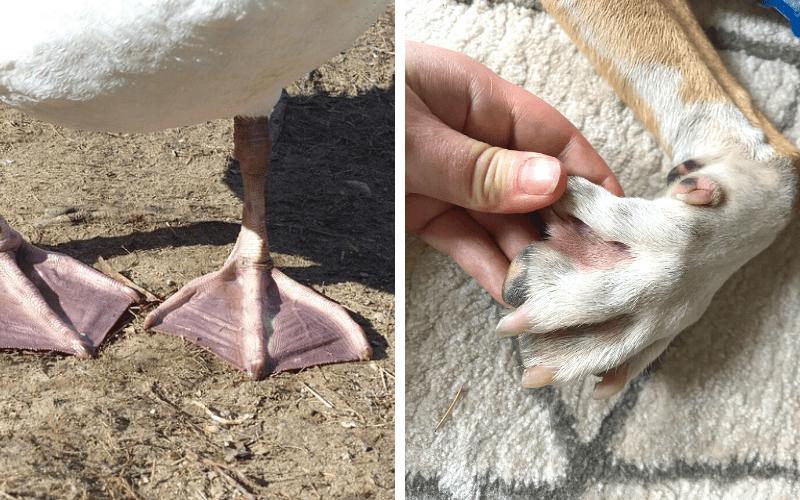
You can understand now that, if a breeder was looking to create dogs who could work in and around water (such as search and rescue dogs), webbed feet could be incredibly beneficial.
Webbed feet can also make it easier for dogs to dig. The webbing essentially functions like a shovel blade, allowing them to move dirt around more easily.
For dogs whose work involves digging up varmints, this is ideal.
Webbed feet also proved helpful for those dogs working in swampy areas or on soft ground — you’re not going to see these type of dogs slipping and sliding around in the mud!
17 Dog Breeds with Webbed Feet
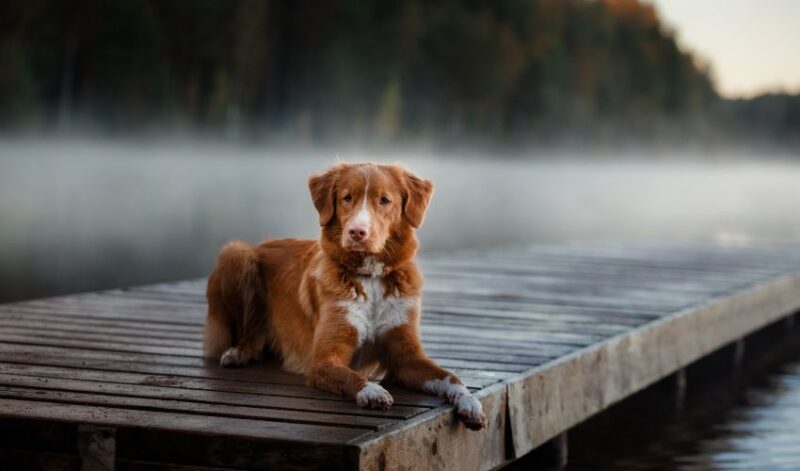
Now that you understand some of the benefits webbed feet provide, we can dive into a few of the most notable dogs with webbed feet!
1. Labrador Retriever
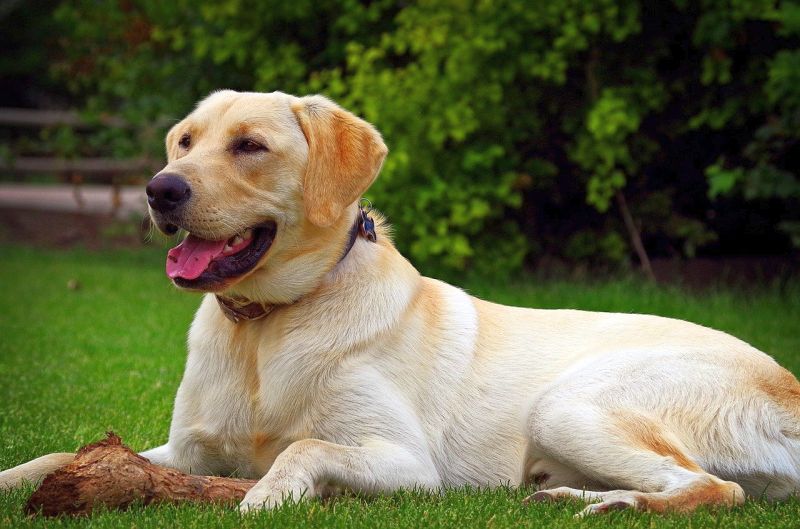
Chances are, you already know of, love, or own a Labrador retriever. The most popular of all breeds, this barker is known to be a wonderful family pet due to his friendly, affectionate nature.
Today, Labradors and Lab mixes make for fantastic service or police dogs because of the breed’s intelligent and sociable ways. His grooming regime is fairly low maintenance, too, though he is a heavy shedder.
The Lab is famously food-orientated, so he’s very easy to train, but you’ll find that he needs a lot of exercise to balance his love of food and high-energy temperament.
Like many dogs, insufficient exercise and stimulation can lead to a Labrador retriever becoming hyperactive and destructive. Taking him on a walk to a safe body of water is an excellent form of exercise — it combines his two favorite things, swimming and retrieving!
The Labrador has a double-layered, water-repellent coat, a strong, rudder-like tail to steer him through the water, and large webbed paws. This winning combination makes him a wonderful, confident swimmer!
2. Newfoundland
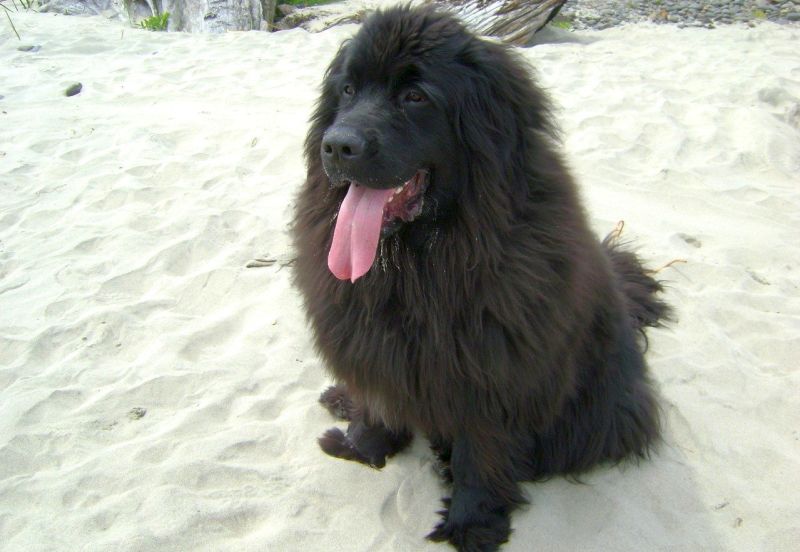
With even thicker fur than the Labrador, the Newfoundland has waterproof a coat and webbed paws that allow him to stay in the water for long periods of time.
This originally made the breed a fantastic partner for fishermen in Canada. His strong, sturdy frame and impressive physical stamina meant that he could pull nets and fetch fish for his owner.
In modern times, you’ll often find a Newfoundland working in search and rescue or simply being a brilliant family member. He is a dog that loves the outdoors and will make an ideal companion for long hikes and lake trips.
Although the breed’s giant size and strength may be intimidating for some, it’s important to know that the Newfoundland is very sweet and gentle, especially with children, provided he’s taught to mind his manners with early obedience training.
If you’re considering adding a Newfie or a Newfie mix to your family, it’s not a bad idea to get the children involved with the grooming — it’ll need to be done at least once a week, and can be a great bonding activity!
3. Poodle
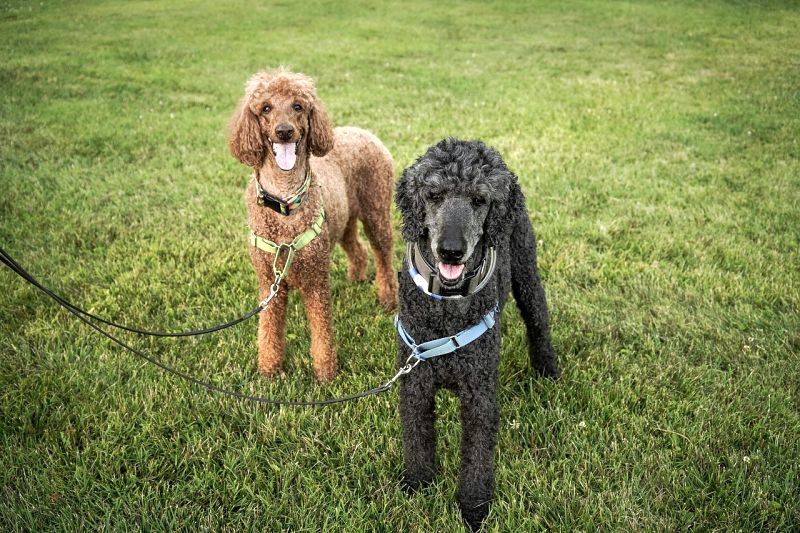
Clever, curly, and cute, the poodle is a breed often associated with stylish city folk — but he is surprisingly comfortable enjoying the great outdoors, too!
Unlike other dogs with webbed feet that tend to have oilier fur, the poodle has a very soft, low allergen coat.
It’s important to note that a poodle’s coat needs daily grooming to prevent the fur from getting matted. But the upside? This is a breed that barely sheds!
The poodle is one of the most intelligent breeds around, so he’s the ideal dog to get involved in agility or obedience training.
Your poodle will likely love to swim, making swimming a great addition to your dog’s exercise routine. This is vital, as this breed has a lot of energy that needs a release!
This is an excellent retriever originally bred to fetch waterfowl, with his webbed paws allowing him to be quick and precise while working in the water.
Note that poodles come in several sizes, meaning that you should be able to find one that’s a perfect match for your family!
4. Portuguese Water Dog
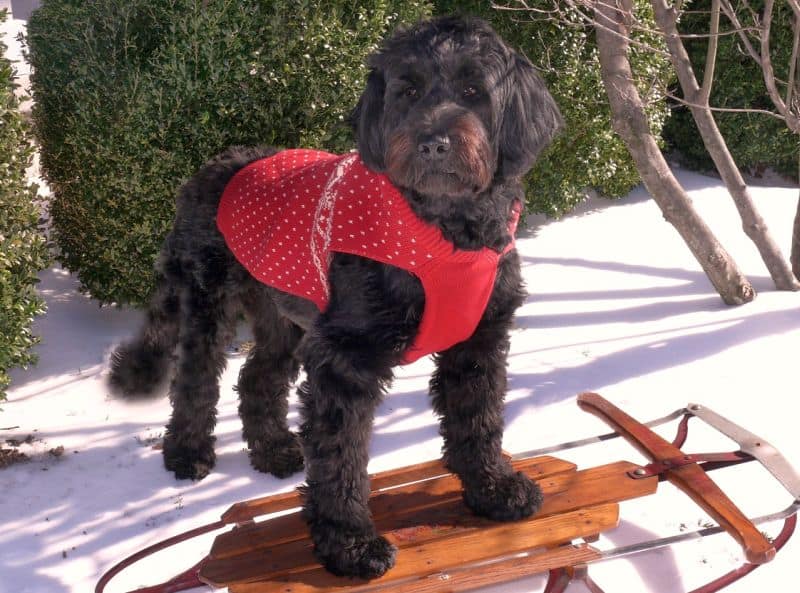
While the Newfoundlands’ incredible strength meant that their line of work revolved around heavy-duty lifting, the Portuguese water dog was used for herding due to his much smaller frame.
This dog herded schools of fish into the nets, saving fishermen a lot of time and energy. As you can imagine, based on this history of hard work, the Portuguese water dog likes a lot of exercise!
While his fishing days may be over, the Portuguese water dog makes a great companion who’s retained a lot of working dog traits: He’s eager to please his humans, loyal, energetic, and enthusiastic. Oh, and he’s very good at swimming! It’s a good thing he has those webbed feet, right?
Like poodles, the Portuguese water dog has a “hypoallergenic” coat that doesn’t shed very much, making him a perfect dog breed for those who suffer from allergies!
5. American Water Spaniel
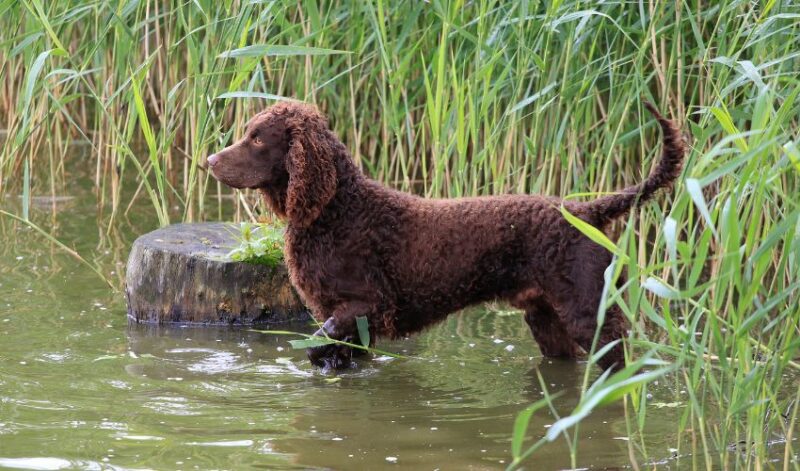
There’s a clue that this pup has webbed feet right in his name!
The American water spaniel is totally at ease in the water. He’s got an oily outer coat to repel water and thickly padded, webbed feet. He also has a nimble frame, which allows him to get in and out of the water without issue.
The American water spaniel was bred to work, and if not working, he will require a lot of mental and physical stimulation in the form of swimming, training, playing, and vigorous walking or running. Without that, he can become very vocal and barky, as well as destructive.
This breed is especially owner-orientated so while he is quick to learn and train, you may find your American water spaniel disinterested in house guests or neighbors.
6. German Wirehaired Pointer
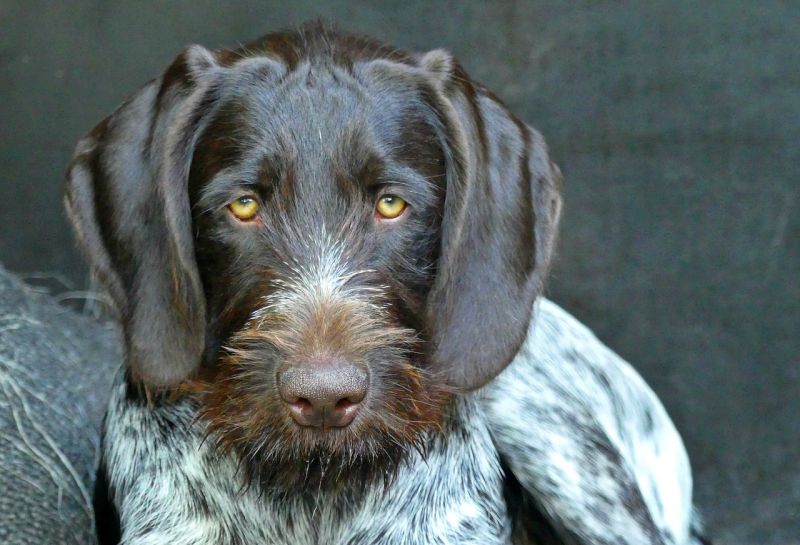
Selective breeding gave the German wirehaired pointer a nifty weatherproof coat (it insulates him in the winter and cools them in the summer), an excellent sense of smell, and — you guessed it — webbed feet.
You’ll recognize this lovely dog from his characteristic beard (just check out the handsome fella pictured above) and dabbled fur coats. His coat is actually quite easy to care for and requires little to no maintenance.
Known as a gun dog breed, the German wirehaired pointer is high energy, responsive, and smart. It’s worth getting your German wirehaired pointer involved in an activity such as canicross, rally, agility, tracking, or hunting in order to provide adequate exercise for both his brain and body! It’s also a great hobby for humans too.
7. German Shorthaired Pointer
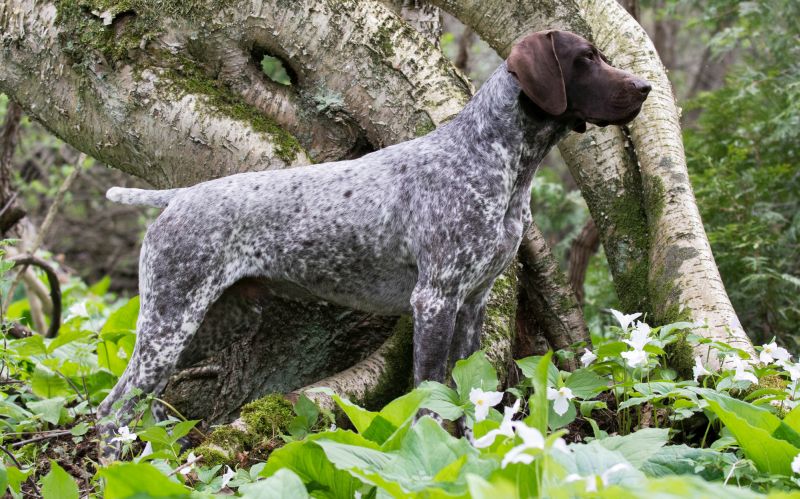
Like his wirehaired counterpart, this dog is a streamlined and powerful hunter. His paws are distinctly small in size and ‘scoop-like’, allowing him to paddle through the water with ease.
The German shorthaired pointer is a pretty affectionate doggo who bonds quickly with his family. However, given his high energy levels, he’ll be happiest with active humans who like to go on long walks and frequent adventures with a pooch.
The German shorthaired pointer is an all-around hunting dog who was bred to perform a variety of different gun dog roles, including flushing and retrieving game. And while he is comfortable working upland habitats, forests, and fields, his webbed feet shine best in the water.
8. Dachshund
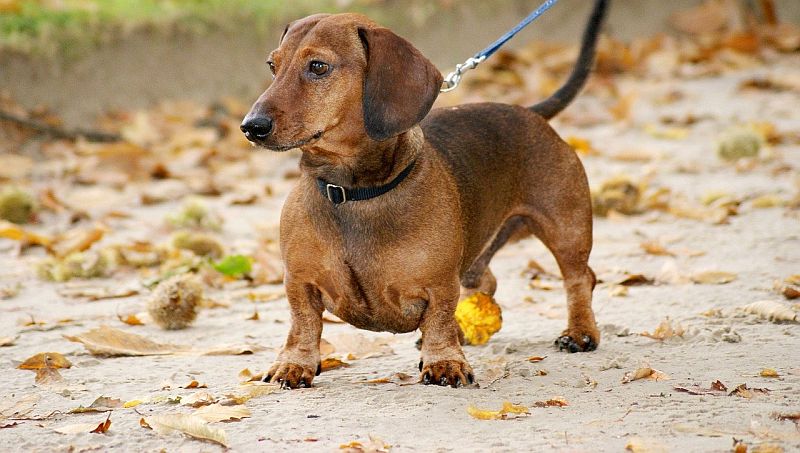
The sweet little sausage dog we’ve all grown to know and love was originally bred for hunting!
His famously long, slender body enables him to get into tight spaces to find mammals such as badgers and rats, making him one formidable floof!
This is the first dog we’ve featured on our list that has webbed feet, not for the purpose of swimming, but to make his paws into strong, shovel-like tools for digging!
While the dachshund is not averse to swimming, he is not likely to want to do anything long-distance. It is important, however, to make sure your dachshund gets good exercise to maintain the muscles supporting his long, delicate spines. It’s vital to watch this pup’s body weight — he doesn’t need any further stress on his bones!
The dachshund comes in several types, with variations based on size and coat (the smooth-coated are definitely the easiest to groom).
The dachshund is wonderfully affectionate and responds well to praise but can be stubborn to train. As mentioned, he was bred to stay focused on his hunting mission — so in your home, it might be difficult to get his full attention!
Just note that he is a sensitive soul and will not respond well to punishment-based training. Stick to force-free, positive reinforcement training!
9. Weimaraner
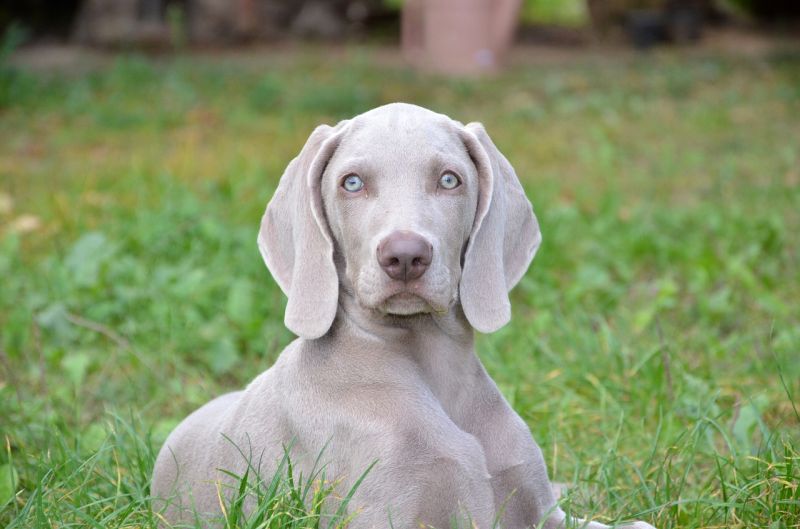
Have you ever met a Weimaraner and noticed how poised and elegant he was while sitting?
He may have inherited that from his canine ancestors, as Weimaraners were used as hunting dogs by royalty in the 18th century. He makes an intelligent, loving pet and is a great addition to an active family.
Don’t worry, his regal roots haven’t made him a high-maintenance hound! Weimaraners and Weimaraner mixes are usually fun-loving goofballs.
This breed’s sleek, glossy coat is easy to groom. You’ll just need to pay attention to nail trimming (like all breeds) and keeping his long ears clean. The structure and shape of a Weimaraner’s ears means that airflow is restricted, which can result in a higher risk of infection.
If you’re looking for a motivated running partner, a Weimaraner is the pet for you. His long limbs need to be stretched out by regular running opportunities! His large, arched toes and webbed feet can get him through any terrain with speed — even water!
10. Otterhound
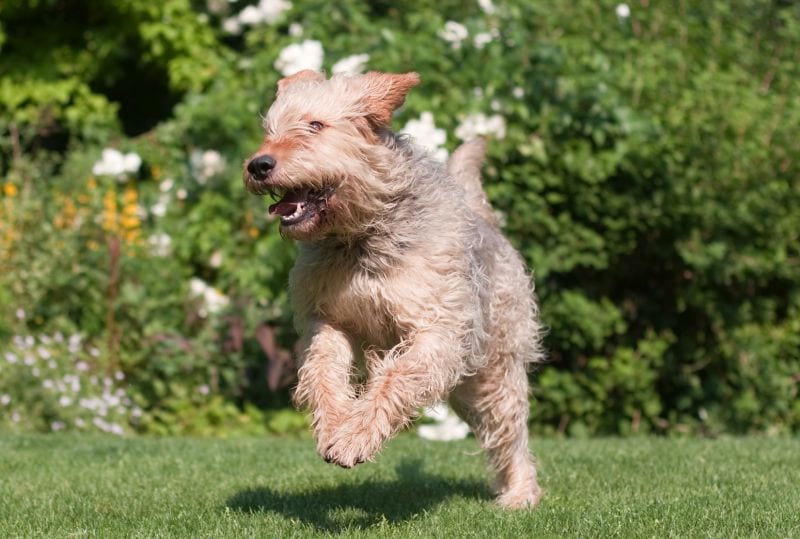
A lesser known breed, the otterhound originated in the UK.
Boisterous and bouncy, this hunting dog is a top-notch swimmer thanks to his broad shoulders, rough coat, large webbed feet, and muscular build.
The breed’s incredibly strong sense of smell could be put to good use with some fun enrichment games at home!
Despite his working background, the otterhound is warm and friendly to children and other dogs alike.
Well worth considering if you are looking for a unique addition to the family, the otterhound only needs brushing once or twice a week and thrives on praise and treats. This makes him wonderful at learning new tricks and basic obedience.
A number of otterhound owners have noted the need for a high, secure fence in the backyard, as the breed’s tall, agile frames mean he can jump quite high.
This guy isn’t a ‘self-starter,’ so to speak, and would rather lounge on the sofa than exercise in the garden — he’ll need some encouragement and lots of walks with good sniffing spots!
11. Chesapeake Bay Retriever
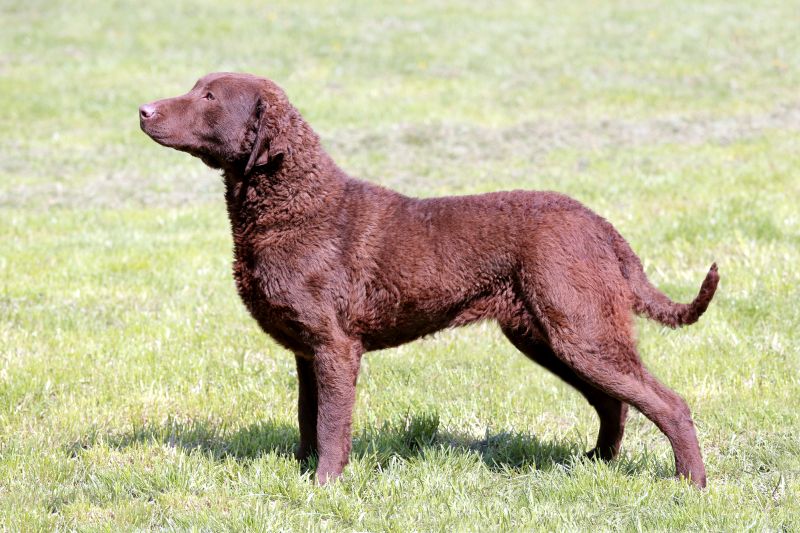
A fiercely loyal breed, the Chesapeake Bay retriever is a brilliant companion.
Also known as the ‘Chessie,’ he thrives when working and will need an active human to go on plenty of outdoor adventures with! Aesthetically, he is not dissimilar to the Labrador retriever, with the exception of his wavy coat.
Long used for hunting ducks in the icy cold waters of Chesapeake Bay, this breed puts his webbed feet, rounded supportive toes, and strong muscular frame to good use when swimming. Although his fur is short, it is well-insulating and thick.
The Chesapeake Bay retriever has a pretty interesting origin story.
Some historical sources have revealed that in 1807, two puppies named ‘Sailor’ and ‘Canton’ were bought from a ship in Maryland for their “great reputation as water dogs” and “duties connected with duck hunting,” with coarse fur of a “dingy red color” and light colored eyes.
While no official breeding records are present, it is believed these dogs were then bred with local bay area dogs to eventually create the Chesapeake Bay retriever, officially recognized as such by the American Kennel Club in 1918.
12. Nova Scotia Duck Tolling Retriever
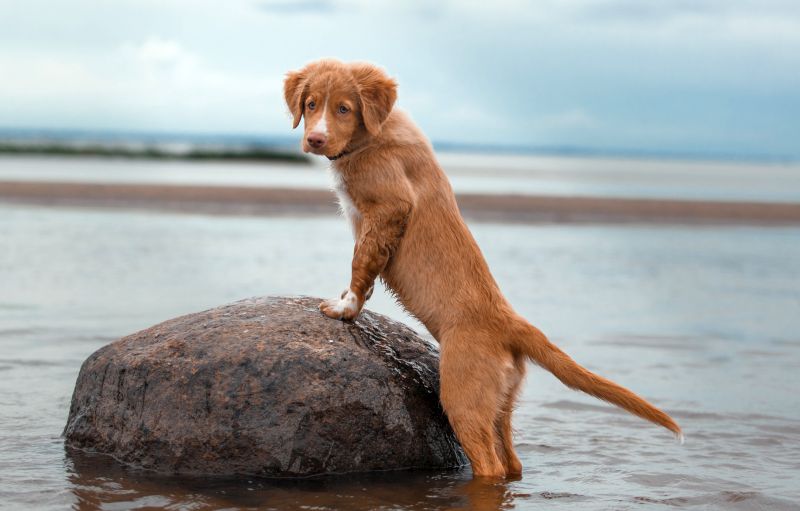
For those that didn’t know, the word “tolling” describes this breed’s ability to entice prey into a shooting range or trap.
The Nova Scotia duck tolling retriever was bred to hunt in water and is easily recognizable by his strikingly copper red, thick coat of fur.
More webbing in his paws than most other webbed-feet breeds means that he is one of the quickest, most agile swimmers we mention here.
Despite his plush coat, the Nova Scotia duck tolling retriever requires very little grooming. A weekly brushing while paying careful attention to the backs of the ears (where the fur is finer and easily knotted) will suffice. You may need to trim excess fur between the pads of his feet in order for him to not slide and slip indoors on hard floors.
It has been said that the Nova Scotia Duck Tolling Retriever has “the brain of a Chessie and the heart of a Spaniel”. He’s upbeat, affectionate, and alert. Short and snappy training sessions are recommended due to his short attention span.
13. Irish Water Spaniel
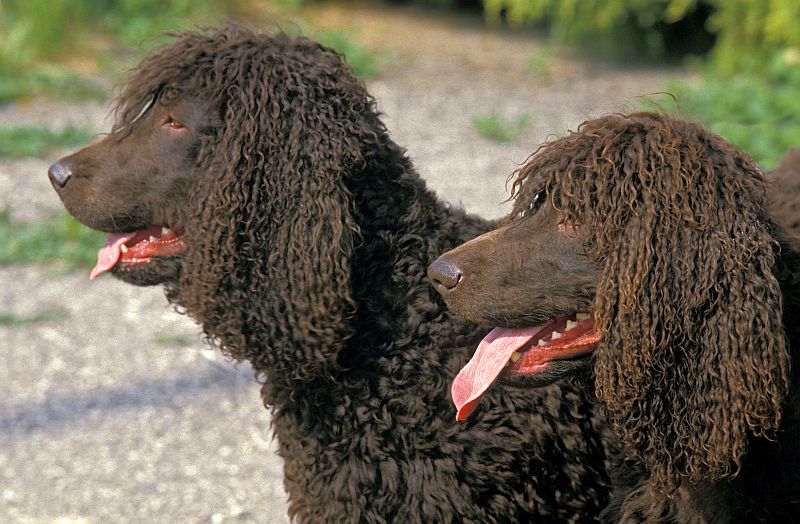
Not surprisingly, given the name, this doggo loves to swim, putting his webbed feet to good use.
He’s one of the most well-established spaniel breeds, said to have originated in the 7th century.
This webbed-foot dog has wonderful springy curls as a coat (which is great for people suffering from allergies), so it’s important to introduce grooming early on in the dog’s life so he learns it is a positive experience!
The Irish water spaniel is typically an awesome family dog, and he usually gets along well with kids. However, he rarely likes being left alone, and it occasionally triggers separation anxiety.
14. Boykin Spaniel
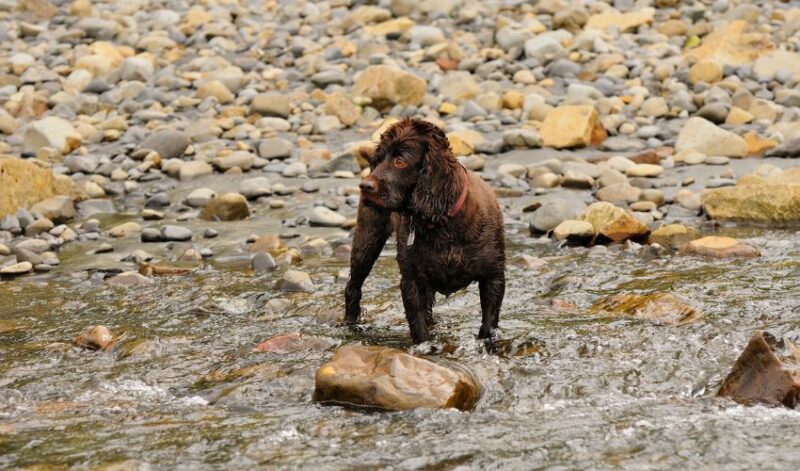
This happy-go-lucky spaniel is famously friendly and eager to please, making him a good choice for newbie dog owners after a sporty sniffer in a more portable size. His webbed feet allow him to power through the water with ease, making swimming an obvious exercise of choice to burn off his ample energy. Another great option is a canine sport like dock diving.
The Boykin has a medium-length coat that requires occasional brushing to remove tangles, particularly around the ears. You’ll want to clean inside his ears regularly, too, as this breed’s dangling earpieces are prone to infection.
This spaniel is relatively healthy, but as with any breed, there are some health concerns to watch for, including hip and knee issues and eye disorders.
15. Field Spaniel
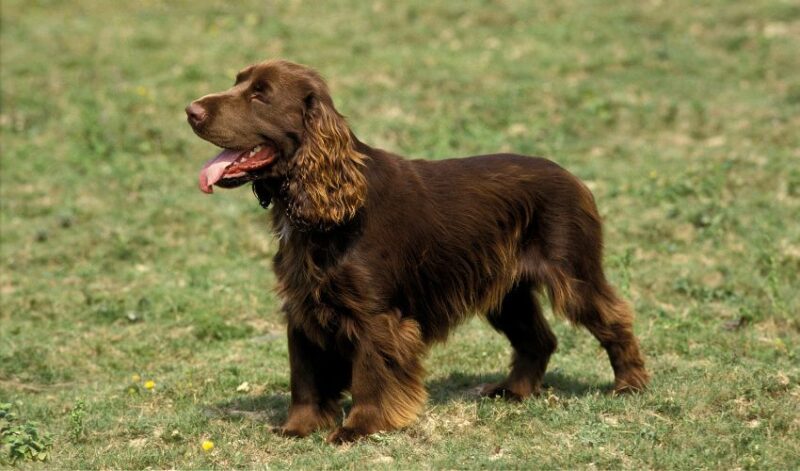
Sweetness is a hallmark of this spaniel, whose AKC breed standard specifically mentions his webbed feet. Bred as a bird dog, he’s a natural in the field (as his name implies,) but he’s also an all-star at home, known to be uber affectionate with his people. His gentle ways work great with young children, and while he is playful, he isn’t as fun-obsessed as other sporting breeds.
Training this floof can be a real treat, as he tends to be eager to please. Keep in mind that he’s sensitive, however, and will not respond to harsh corrections. As a relatively smart sniffer, he’ll also need varied, fun lessons to hold his attention.
The biggest upkeep of this doggo is grooming. His medium-length mane requires weekly brushing, focusing around his ears, leg feathers, and tail — all areas prone to tangles. His ears need regular cleaning as well since he’s a breed prone to painful ear infections.
16. Wirehaired Pointing Griffon
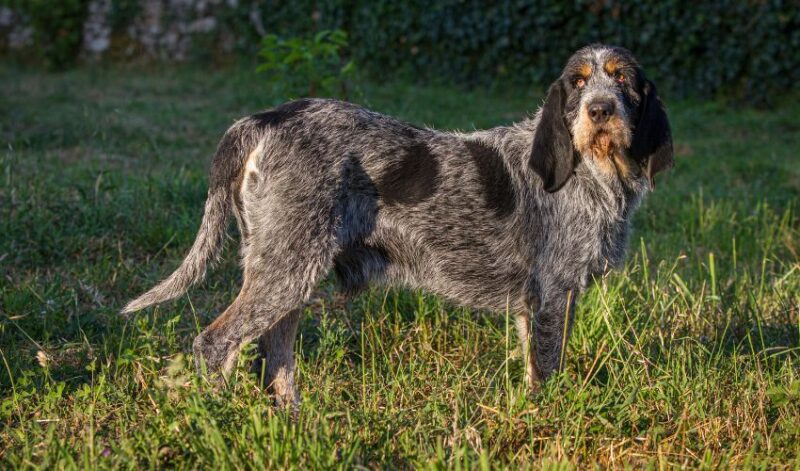
Lovingly known to breed fanciers as the Griff, this large hunting doggo started as a do-it-all dog for German hunters, thriving at flushing game on land and retrieving downed birds in the water, thanks to his webbed toes. He’s sometimes confused with the wirehaired German pointer, but he’s very much his own breed with a distinct look.
This grizzly gentleman is one big ol’ lovebug, excelling just as much at home with his family as he does outdoors hunting. He’s a social butterfly with people, so he’s not a good fit if you’re seeking a watchdog. He’ll likely let a burglar come in for belly rubs!
While training this woofer is easier than most, keeping up with him can be a significant challenge. This is a working dog at heart, and he needs vigorous physical and mental exercise daily to satisfy his needs. He’s not a dog who’ll be content with a leisurely afternoon stroll. He needs to run, jump, and play!
17. Golden Retriever
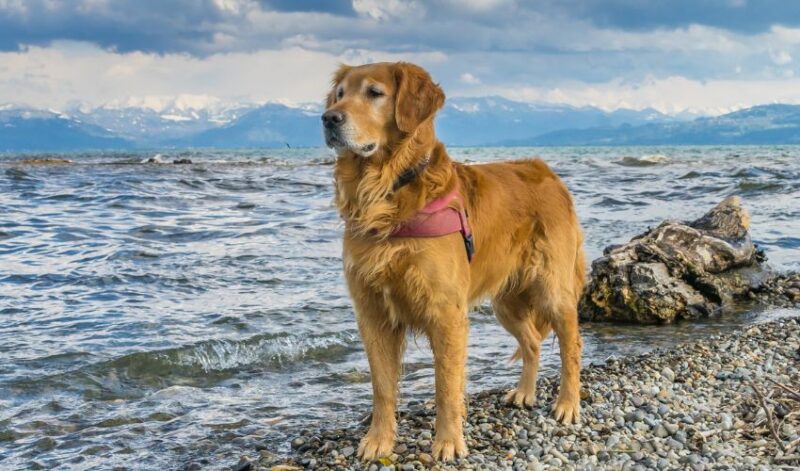
Hailing from Scotland, this sweet golden great began as a gundog, thriving in the field and water thanks to his webbed feet and eager-to-please nature. His smart-as-a-tack, biddable ways make training him a breeze compared to other barkers, working well with first-time dog owners. He’s also one of the more sociable, friendly breeds, earning him a star role as a service dog far and wide.
As a hunting dog at heart, the golden requires daily physical and mental exercise, preferably at your side. Hiking and hunting outings are perfect ways to expend his energy, along with canine sports like agility, obedience, and dock diving. Without sufficient exercise and attention, your golden will make his own fun… which may involve chewing your favorite furniture.
Grooming the golden is another tricky aspect of ownership, as his medium-length, plush coat needs brushing a few times weekly to prevent tangles and remove ever-shedding hair. Bathe him only as needed, and ensure he’s completely dried after since he is a breed prone to hot spots and other skin irritations.
Dogs With Webbed Feet: FAQ
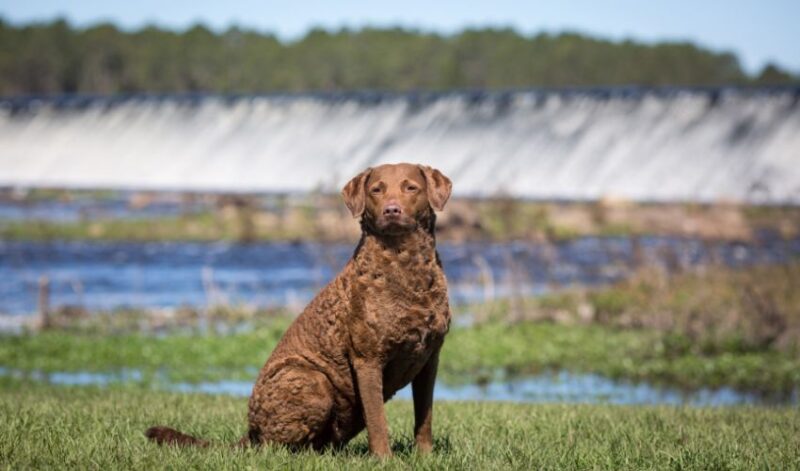
Still curious about web-footed woofers? Browse the most frequently asked questions about dogs with webbed feet and the corresponding answers.
What breeds have webbed feet?
Most dog breeds have some degree of webbing between their toes, but select doggos have more than others to help them excel at a job such as swimming or digging. Breeds best known for having webbed paws include the Labrador retriever, Newfoundland, and Portuguese water dog.
What does webbed feet on a dog mean?
Webbed feet on a dog usually mean the breed originated for water use or digging tasks, like chasing game or rodents into burrows or holes. Water dogs typically retrieve downed game, but they may also work in water rescue, such as the Newfoundland, a breed famous for plunging into icy waters to help people.
You may also find webbed feet on today’s popular designer dog breeds, as one or both parent pups may have the trait. For instance, a Labradoodle likely has webbed feet, as Labrador retrievers and poodles both have webbed paws.
Do dogs with webbed feet swim better?
Yes, webbed feet can make swimming easier for canines. That said, don’t assume your dog can swim just because he has webbed paws. Always practice water safety and monitor your mutt around bodies of water, including pools and ponds.
Why do Goldendoodles have webbed feet?
Goldendoodles have webbed feet because both parenting breeds — the golden retriever and poodle — have webbed paws. They were both originally bred for hunting water birds, with webbed paws making them excellent swimmers when retriever downed fowl.
Are Labs the only dogs with webbed feet?
Nope! Many pups have webbed feet, including popular dog breeds like poodles and dachshunds. Yes, dachshunds. While not known for an affinity for swimming, these burrowing barkers still have webbed paws that make digging easier.
Now admit it — you’re going to go check out your dog’s paws, aren’t you? Or did you already do that mid-article?
Let us know in the comments if your dog has webbed paws. Is he a great swimmer? Always finding some mud to dig around in? We’d love to hear your stories!
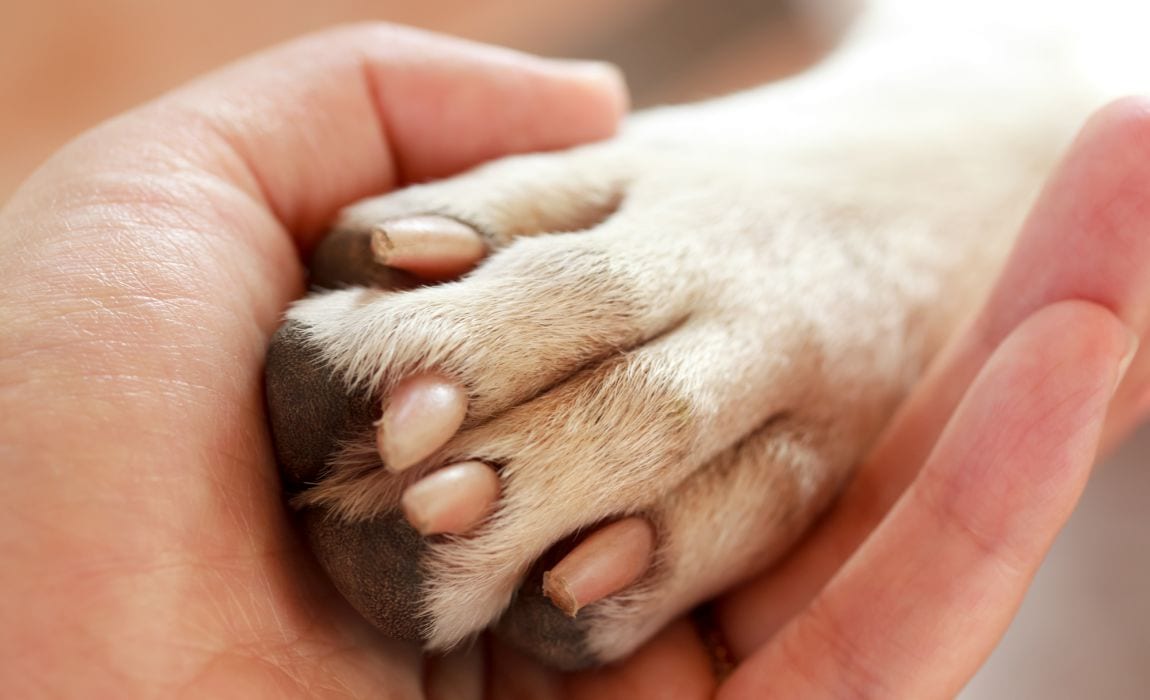

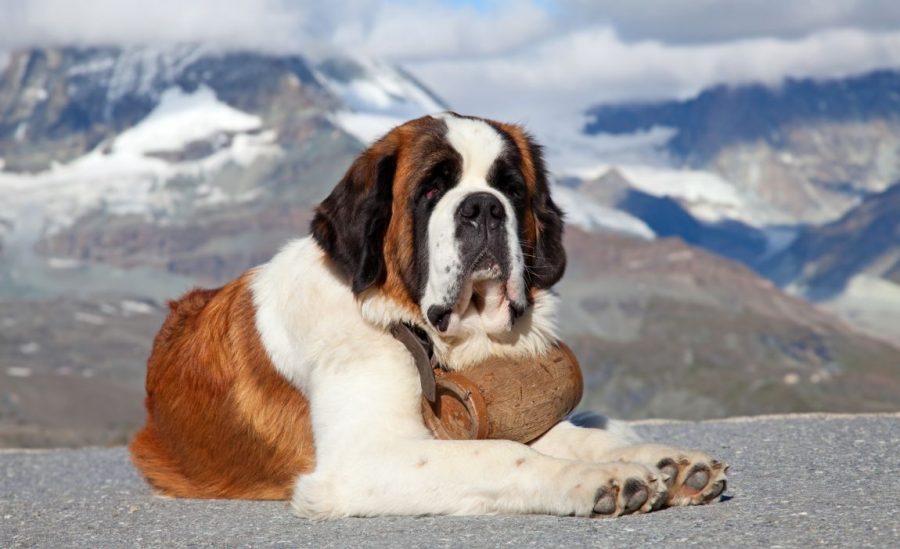


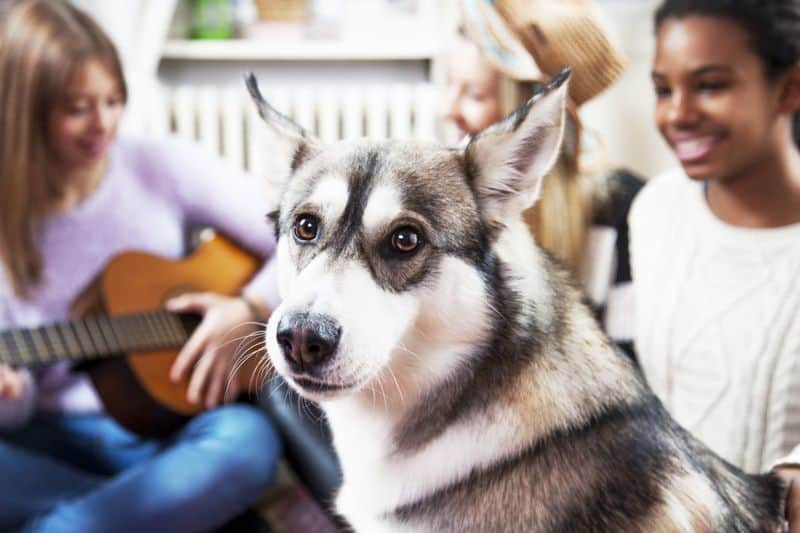

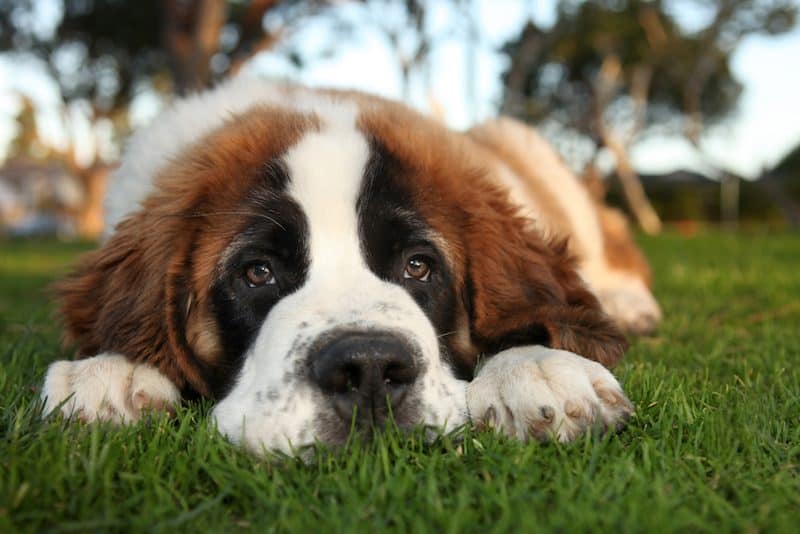
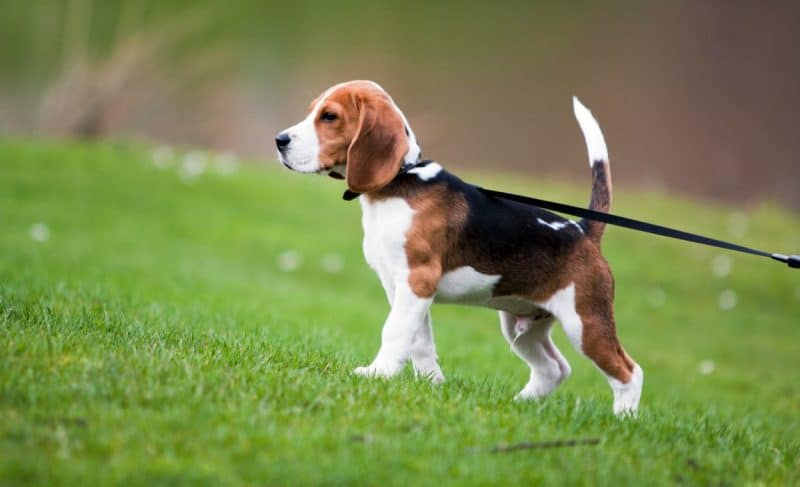

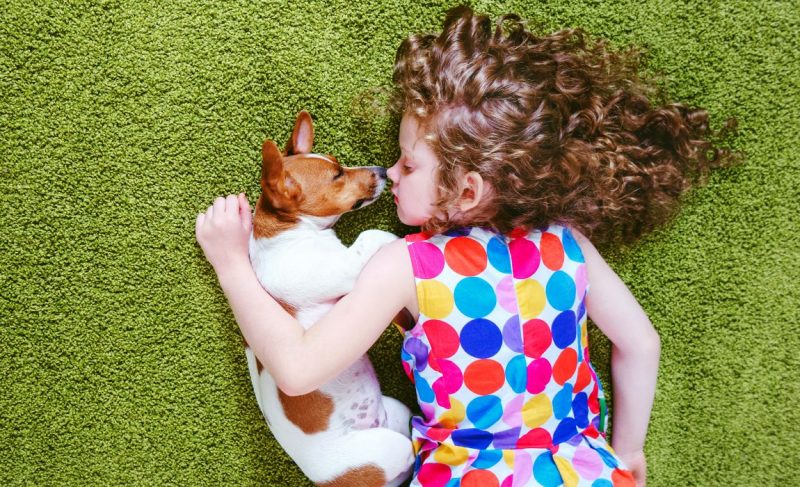


Leave a Comment